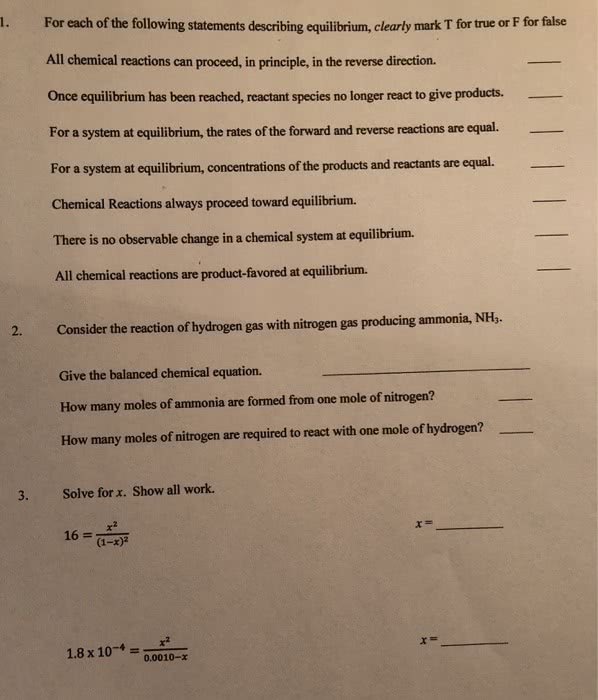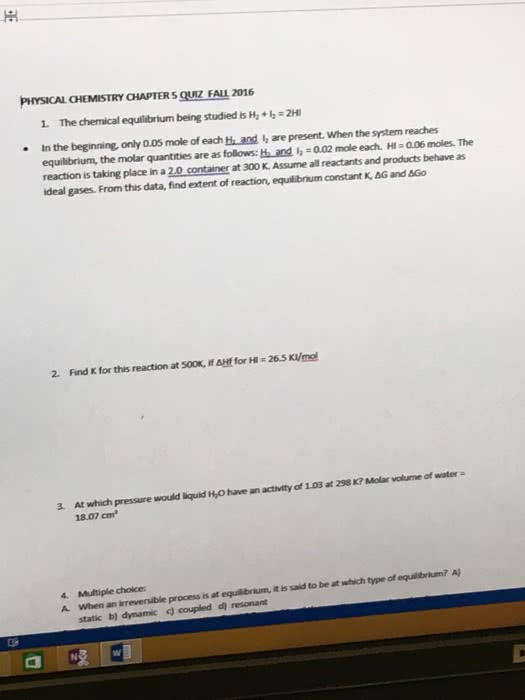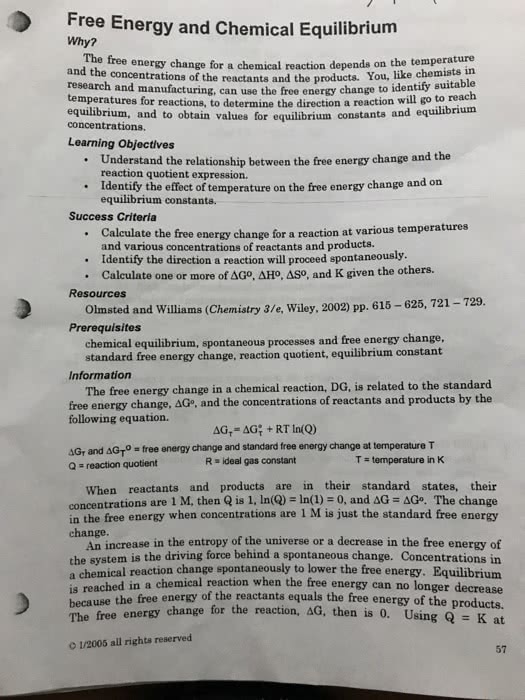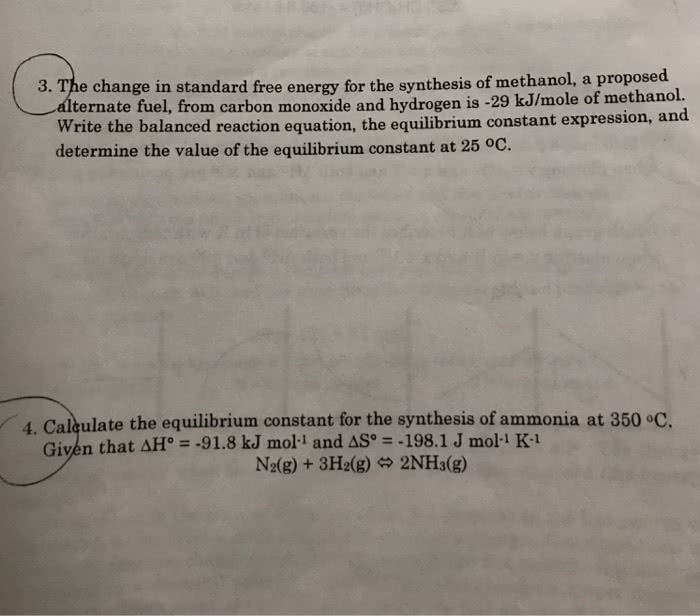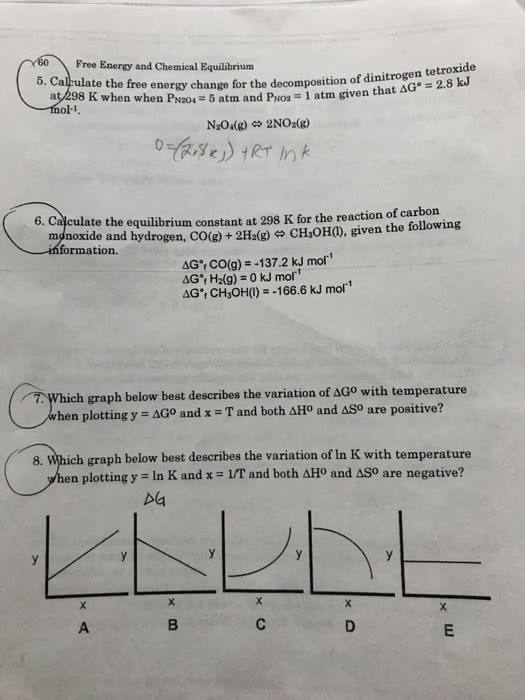CHEM1011 Lecture Notes - Lecture 24: Chemical Equilibrium, Equilibrium Constant, Ideal Gas

Lecture 24
Recap: The equilibrium constant, K
The fundamental observation of chemical equilibrium was first stated by Guldberg and Waage.
At a give teperature, a cheical syste reaches a state in which a particular ratio of
reactat ad product cocetratios has a costat value.
This says that at equilibrium there is always a finite amount of both reactants and products
present in a chemical system!
Writing the equilibrium constant
Consider the decomposition of N2O4 into 2 moles of NO2
find more resources at oneclass.com
find more resources at oneclass.com
Document Summary
The fundamental observation of chemical equilibrium was first stated by guldberg and waage. (cid:862)at a give(cid:374) te(cid:373)perature, a che(cid:373)ical syste(cid:373) reaches a state in which a particular ratio of reacta(cid:374)t a(cid:374)d product co(cid:374)ce(cid:374)tratio(cid:374)s has a co(cid:374)sta(cid:374)t value. (cid:863) This says that at equilibrium there is always a finite amount of both reactants and products present in a chemical system! Consider the decomposition of n2o4 into 2 moles of no2. Just as we can use measured equilibrium concentrations (or pressures) to determine the value of the equilibrium constant, the equilibrium constant and some composition information can be used to calculate unknown concentrations. For reactants and products in any state, we represent them in the equilibrium constant expression as follows: Partial pressure may be converted to concentration with the ideal gas equation. Pure solids and liquids have a mole fraction of 1 (so we leave them out).


